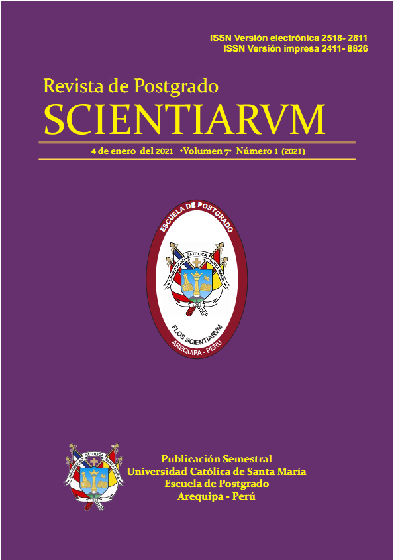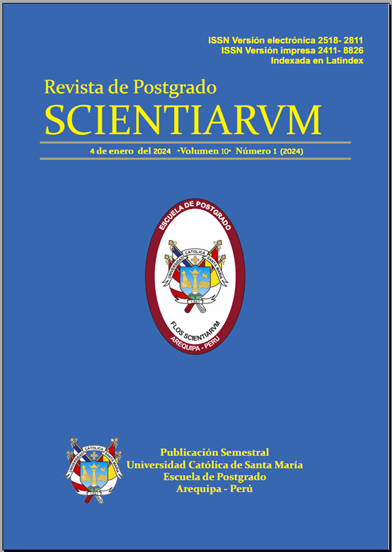EPIDEMIOLOGIA DE LA HIPERPLASIA PROSTATICA BENIGNA (BPH)
EPIDEMIOLOGY OF BENIGN PROSTATIC HYPERPLASIA (BPH)
Daniel Luque Zurita1, Ángel Pérez Valverde1, Luis Lizárraga Vargas2, Shirley Campos Beltrán3, Pía Lazo Neira3
- Universidad Nacional de San Agustín, Arequipa – Perú.
- Ministerio Público, Arequipa – Perú.
- Clínica SERMEDIAL, Arequipa – Perú.
RESUMEN: Varios mecanismos parecen estar implicados en la patofisiología de la Hiperplasia Prostática Benigna. Estos representan modificaciones tisulares con la edad relacionadas con alteraciones hormonales y síndrome metabólico, así como también inflamación (Briganti et al, 2009, Vignozzi et al, 2016, Sebastianelli et al, 2018). Los Tsimane son un estudio de casos clave para comprender la etiología de la Hiperplasia Prostática Benigna ya que ellos tienen bajos niveles de obesidad y el síndrome metabólico, así como también menores niveles de Testosterona comparados con varones de similar edad de EEUU carentes de BPH. En general esos datos sugieren que la BPH puede no ser una parte inevitable del envejecimiento masculino durante la historia evolutiva humana (Trumble et al, 2015). Ante la alta prevalencia de BPH tanto en el mundo como en Perú es necesario investigar cuáles son sus factores asociados con fines terapéuticos y de prevención. Material y métodos Este estudio transversal incluyó 162 pacientes de ≥ 60 años del historial clínico del laboratorio de la Clínica Sermedial con y sin BPH. Se registró de cada paciente los resultados de pruebas bioquímicas y cardiológicas estándar (Glucosa, Triglicéridos, HDL – Colesterol, Ácido Úrico, Presión Arterial Sistólica y Presión Arterial Diastólica) y de su composición corporal (Edad, Peso, Talla, Circunferencia Cintura, Índice de Masa Corporal e Índice de Conicidad). Se utilizó el programa estadístico SPSS y los datos se expresarán como promedios DS. Su aplicará ANOVA, así como la prueba de especificidad de Scheffe para determinar diferencias entre variables cuantitativas entre localidades, chi cuadrado entre variables categóricas; y los coeficientes de correlación de Pearson (r) para describir asociación entre variables. En todas las pruebas p<0,05 será considerado significativo. El análisis estadístico se ejecutará con el software Statistica (versión 7.0; StatSoft Inc, Tulsa, USA). Para evaluar la relación o asociación entre factores bioquímicos, cardiacos y corporales con BPH Resultados Con significancia estadística (p<0.05) BPH está asociada con valores anormales de glucosa, triglicéridos, HDL-colesterol, ácido úrico Presión Arterial Diastólica, Índice Masa Corporal y Circunferencia Cintura en varones con los rangos de edad desde 60 hasta ≥ 90 años. Conclusión El hallazgo principal de nuestro trabajo es la asociación independiente, estadísticamente significativa (p<0,05) con valores bioquímicos, cardiacos y corporales que podrían ser revertidos con dieta y ejercicio.
Palabras Clave: Adultos mayores, hiperplasia benigna prostática, testosterona, composición corporal.
ABSTRACT: Several mechanisms appear to be involved in the pathophysiology of Benign Prostatic Hyperplasia. These represent tissue modifications such as age related to hormonal disorders and metabolic syndrome as well as inflammation (Briganti et al, 2009, Vignozzi et al, 2016, Sebastianelli et al, 2018). The Tsimane are a key case study to understand the etiology of Benign Prostatic Hyperplasia as they have low levels of obesity and metabolic syndrome as well as lower levels of Testosterone compared to men of similar age in the US lacking BPH. In general, these data suggest that BPH may not be an inevitable part of male aging during human evolutionary history (Trumble et al, 2015). Given the high prevalence of BPH both in the world and in Peru, it is necessary to investigate what are its factors associated with therapeutic and preventive purposes. Material and methods This cross-sectional study included 162 patients aged ≥ 60 years of the clinical history of the Sermedial Clinic laboratory with and without BPH. The results of standard biochemical and cardiological tests (Glucose, Triglycerides, HDL - Cholesterol, Uric Acid, Systolic Blood Pressure and Diastolic Blood Pressure) and their body composition (Age, Weight, Size, Waist Circumference, Index of each patient were recorded for each patient). Body Mass and Conicity Index). The SPSS statistical program was used and the data will be expressed as means DS. Your will apply ANOVA as well as the Scheffe specificity test to determine differences between quantitative variables between locations, chi square between categorical variables; and Pearson's correlation coefficients (r) to describe association between variables. In all tests p <0.05 will be considered significant. The statistical analysis will be executed with Statistica software (version 7.0; StatSoft Inc, Tulsa, USA). To evaluate the relationship or association between biochemical, cardiac and body factors with BPH Results With statistical significance (p <0.05) BPH is associated with abnormal values of glucose, triglycerides, HDL-cholesterol, uric acid Diastolic Blood Pressure, Body Mass Index and Circumference Waist in men with age ranges from 60 to ≥ 90 years. Conclusion The main finding of our work is the independent, statistically significant association (p <0.05) with biochemical, cardiac and body values that could be reversed with diet and exercise.
Revista Seleccionada
Enero 2021 Volumen 7 - Número 1 P 27-34
DOI: 10.26696/sci.epg.0127
Enlaces
CIENCIAS SOCIALES Y HUMANIDADES
LIMITACIONES Y PRINCIPALES RETOS DE LA ORALIDAD CIVIL EN EL SISTEMA JUDICIAL PERUANO
LA (IN)DEBIDA REGULACIÓN DE LA TUTELA CAUTELAR EN EL PROCESO DE AMPARO PERUANO
¿ES POSIBLE LA PROTECCIÓN INTERNACIONAL DE LOS DERECHOS DE LOS CONTRIBUYENTES?
CIENCIAS BIOLÓGICAS Y DE SALUD
EPIDEMIOLOGIA DE LA HIPERPLASIA PROSTATICA BENIGNA (BPH)
BACTERIAS ENDOFÍTICAS DE ELODEA POTAMOGETON (“LLACHU”) DEL LAGO TITICACA


